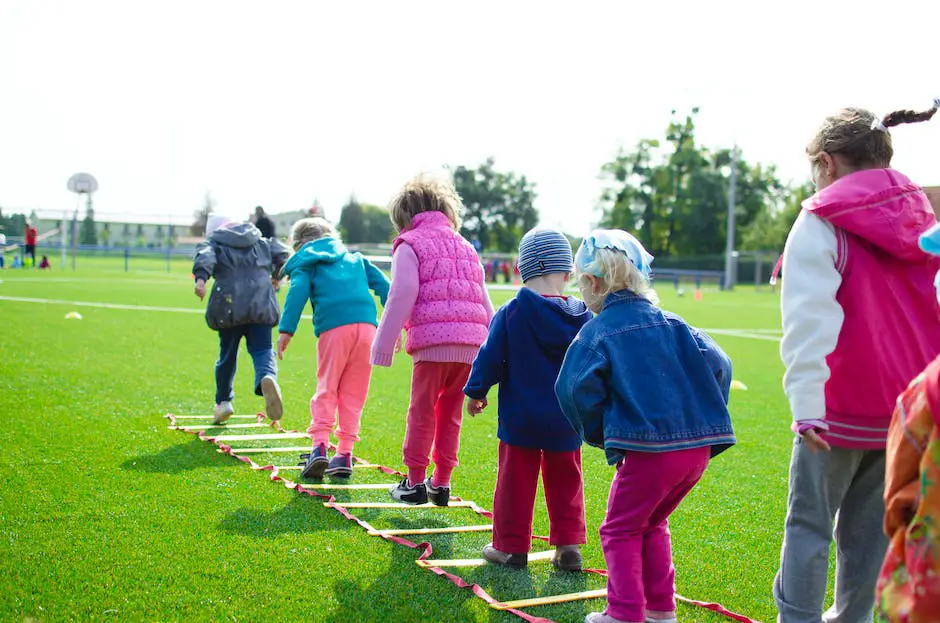Understanding and Supporting Youth Mental Health

It is becoming increasingly apparent that youth mental health is a crucial area demanding our attention. With our young generation grappling with various internal and external stressors, understanding the nature of their mental health issues, the factors contributing to them, and the ways to address them is critical. This piece aims to delve into the intricacies of youth mental health, shed light on the current state, causative elements, signs, treatments, and prevention strategies, thereby facilitating a comprehensive understanding of this important issue. Paying heed to such aspects enables us to navigate challenges, providing our youth with effective support, contributing to their overall wellness, and ensuring they thrive in their personal, educational, and eventual professional lives.
The current state of youth mental health
Prevalence of Mental Illnesses in Youth
Based on the most recent data from the National Survey on Drug Use and Health (NSDUH), nearly one in five U.S. adults live with a mental illness (51.5 million in 2019). This is a troubling trend that extends to the younger population as well. According to the National Institute of Mental Health (NIMH), just over 16% of youth (ages 6-17) experienced a mental health disorder in 2016.
Mental Health Issues Across Age, Gender, and Ethnicity
Mental health disorders in young people vary by age, gender, and ethnicity. 9.7% of youth have a behavior or conduct problem, 63.6% of youth with major depression receive treatment, and 50% of all lifetime mental illnesses begin by age 14.
Boys are more likely than girls to have behavior or conduct problems, while girls are more prone to experience depression. The prevalence of mental health issues is also higher among youth who identify as multiracial.
Consequences of Untreated Mental Health Issues
Untreated mental health issues in youth can lead to a multitude of negative outcomes, including poor academic performance, substance misuse, conflict with law enforcement, and even suicide. In fact, suicide is the second leading cause of death among people aged 10-34.
Recent Trends in Youth Mental Health
There has been a significant rise in the number of reported mental health issues among youth, particularly regarding anxiety and depression. The pandemic has exacerbated this trend, with connected stressors such as social isolation, fear of the virus, and disruption of routines intensifying mental health challenges among youth.
Challenges in Diagnosing and Treating Youth Mental Health
There are numerous challenges in diagnosing and treating youth mental health. This can include a lack of mental health education and stigma associated with mental illness, leading to underreporting of symptoms by youth and their caretakers. It can also include a lack of available or affordable resources, particularly in low-income communities and for families without health insurance. These factors can lead to delayed diagnosis, inadequate treatment, or complete lack of treatment.
A Brighter Future for Youth Mental Health
Strides are being made to address the urgency of youth mental health. This involves a number of initiatives, including raising awareness and understanding of mental health conditions among young individuals and their caregivers. There are also policy pushes to enhance the funding for mental health resources within schools, alongside research endeavors that seek more effective methods of diagnosing and treating these conditions. Despite these positive steps, there is still a considerable amount to be achieved in order to properly attend to mental health issues in the youth population.

Factors affecting youth mental health
Exploring Personal Characteristics Impacting Youth Mental Health
It has been evidenced through research that specific personal traits can significantly affect the mental health of young individuals. Age is a pivotal factor, given that adolescence is a critical time for neural, psychological, and bodily transformations, all of which can potentially heighten mental health conditions. The acquirement of cognitive abilities and coping mechanisms during this period also has an influential role in mental health. Moreover, aspects of personal identity such as gender, sexual orientation, and cultural heritage can exert an effect on mental health, with those identifying as minority or non-heterosexual individuals presenting a higher risk.
The Role of Family and Social Support
Family and social environments have a major role in the mental health of a young person. Strong, positive relationships with family and peers can support resilience and reduce the risk of mental health problems. Families can provide emotional support, promote positive behaviors and coping strategies, and act as a source of intervention when problems arise. However, family-related stressors, such as divorce or parenting styles, can also contribute to mental health issues. Moreover, peer influence and bullying are critical factors that can affect mental health, with interpersonal relations becoming increasingly important during adolescence.
Environmental Influences and Academic Pressures
School, neighborhood, and wider societal environment can influence youth mental health. Socioeconomic status and associated factors like poverty, access to resources, and quality of education can affect mental health. Experiences in school, including academic pressure, test anxiety, and teacher-student relationships, are also significant factors. High academic pressure has been associated with anxiety and depression in youth.
Genetics, Biology and Mental Health
The role of genetics and biology in mental health is complex. It’s known that mental health conditions such as depression, bipolar disorder, and schizophrenia have a genetic component, making individuals with a family history of these conditions more susceptible. Hormonal changes and brain development during puberty can also influence susceptibility to mental health problems.
Trauma, Abuse, and Youth Mental Health
Exposure to traumatic events or abuse can significantly affect a young person’s mental health. This includes physical, sexual, or emotional abuse and neglect. It also includes experiencing or witnessing violence, accidents, disasters, or loss. Trauma can lead to post-traumatic stress disorder (PTSD), depression, anxiety, and other mental health issues, and can also exacerbate existing mental health conditions.
Understanding the Effect of COVID-19 on Youth Mental Health
In the face of COVID-19, the mental health crisis among the youth has escalated. The sudden alteration of routines, remote learning, and physical distancing from peers have unsurprisingly sparked higher levels of stress, anxiety, and depression among young. Additionally, the looming uncertainty about the future, as well as fear for personal health or the loss of loved ones, has compounded these mental health issues. This highlights the increasing necessity for comprehensive mental health support amidst such overwhelming circumstances.

How to identify signs of mental health issues in youth
Identifying Symptoms of Youth Mental Health Issues
It can be a complicated process to identify symptoms of mental health challenges in young people, as these signs often mirror normal teenage behavior. Emotional fluctuations, increased sensitivity, shifts in sleep patterns or appetite may be chalked up as regular teenage experiences. However, they may simultaneously be an indication of underlying mental health problems. Other warning signs include an unexpected decline in academic performance, a decrease in social interaction, or a sudden, unexplained personality change.
Understanding Red Flags
What differentiates the normal turbulence of teenage years from mental health issues are duration, intensity, and the presence of multiple symptoms coupled with a distinct change from previous behavior. For example, while mood changes can be a part of adolescence, prolonged mood changes that last for over two weeks could be a sign of depression. Other ‘red flags’ to watch for include dramatic changes in weight, intense fear or worries, frequent temper tantrums or aggressive behavior, or any actions that jeopardize safety.
Typical Teenage Behavior Vs. Signs of a Mental Health Issue
It is crucial to understand the fine line between typical teenage behavior and signs of a mental health issue. While adolescence is characterized by a certain degree of impulsivity, experimentation, and mood shifts, persistent and severe manifestations of these traits should not be dismissed as ‘just a phase’. Difficulty concentrating, extreme mood swings, withdrawal from friends and family, reduced interest in activities previously enjoyed, frequent headaches or stomachaches, feeling overwhelmed or worried, or avoiding situations due to anxiety could be signs of a mental health issue.
The Importance of Early Detection and Intervention
Early detection and intervention in youth mental health can have life-changing implications. Research consistently shows that mental health conditions are easier to manage when they are identified early. Integrated healthcare that considers mental health an integral part of a person’s overall well-being is a must. Intervention services such as individual and family counseling, mentorship programs, and psycho-educational resources can have a profound impact on a young person’s mental health trajectory.
Increasing Awareness on Youth Mental Health
Youth mental health issues are a serious concern, often remaining undetected or untreated due to a lack of knowledge among parents, teachers, and healthcare professionals. The need for an increased awareness and understanding of mental health in our youth is paramount. Recognition of signs, symptoms, and potential ‘red flags’ is crucial. It’s equally important to understand the invaluable role of early detection and intervention, given their profound impact on recovery and wellbeing.

Treatment and support for youth mental health
Methods of Intervention: Psychotherapy for Youth Mental Health
Psychotherapy, commonly known as talk therapy, is a prevalent method for addressing youth mental health concerns. Techniques such as Cognitive Behavioral Therapy (CBT) are highly effective for assisting children and adolescents with understanding and managing their thoughts, feelings, and behaviors. Interpersonal Therapy (IPT), another common approach, addresses depression and other mental health issues by improving communication skills. When the entire family is entwined in the problem or could aid in the solution, Family therapy is implemented. And for younger children, Play therapy allows for safe expression of emotions.
Medications for Youth Mental Health
Medication can serve as part of a comprehensive treatment plan for youth mental health issues. The most commonly prescribed drugs include antidepressants, stimulants for Attention Deficit Hyperactivity Disorder (ADHD), anti-anxiety medications, and mood stabilizers. Administering medication is a decision made carefully between healthcare providers and families after detailed discussions about potential benefits and risks.
Alternative Therapies for Youth Mental Health
Alternative therapies like art or music therapy offer additional pathways to healing. They can provide a non-threatening way for youth to express their thoughts, feelings, and emotions. Physical activity is also seen as a vital part of youth mental health care. Regular exercise helps reduce anxiety, depression, and improves mood.
Parental, School, and Healthcare Provider Support
Parents play an essential role in their child’s mental health by validating their feelings, maintaining open communication, and seeking professional help when necessary. Schools also have a role to play through the deployment of services, such as counseling and peer support programs.
As frontline workers, healthcare providers can assist with early detection of mental health issues and intervene as necessary. They’re responsible for diagnosing mental health conditions and establishing a treatment plan that may include therapies, medications, or self-care techniques.
Community Support and Youth Mental Health
A proactive community can significantly impact youth mental health. Community programs and resources can provide support, such as peer groups, mentorship programs, and access to mental health providers. Furthermore, a community that is committed to destigmatizing mental health can cultivate an environment where youth feel comfortable speaking about their mental health and seeking help.
Interlinking Therapeutic Approaches and Support Networks
Effective treatment for youth mental health is often a multifaceted approach that combines medication management, therapeutic interventions, and robust support networks. For example, a young person battling depression might engage in Cognitive Behavioral Therapy (CBT) with a qualified psychologist, use antidepressants overseen by their psychiatrist, incorporate regular physical activity into their routines, and have open discussions with their parents about their feelings and progression. The crux of it all is the personalization of the treatment strategy, designed to address the unique health needs and lifestyle of each young individual.

Preventing and promoting good mental health among youth
Encouraging Healthy Living
One of the most effective preventive measures against mental health issues is the cultivation of healthy living habits from an early age. This means ensuring that children are equipped with balanced diets, engage in regular exercise routines, and maintain a consistent sleep schedule. Establishing these habits early on lays the foundation for a healthier future lifestyle, reinforcing the idea that a healthy body often supports a healthy mind. For instance, research has found that regular physical activities tend to elevate the levels of dopamine, norepinephrine, and serotonin in the brain, all of which influence attention and focus. This can effectively mitigate feelings of depression and anxiety.
Resilience Building
Fostering resilience in children is another preventive measure. Resilience is a psychological quality that enables one to cope with life’s challenges, to adapt to changes, and to recover from setbacks. Cultivating resilience can include techniques like helping children develop problem-solving skills, encouraging a positive outlook and self-esteem, promoting strong relationships and connections, and developing coping strategies for managing stress.
Stigma Reduction
Reducing stigma carries a significant weight in the prevention of mental health issues. Society generally has misconceptions and negative stereotypes about mental health, leading to stigmatization. This stigma can deter youth from seeking help or discussing their mental health concerns. Therefore, it’s crucial to educate society about mental health and dismiss harmful misconceptions, leading to a more understanding and empathetic environment for the younger generation.
Promoting Mental Health through Policies and Campaigns
Governments and organizations play a crucial role in promoting mental health of the youth through their policies and campaigns. Policies that prioritize mental health, such as integrating mental health education into school curriculums, can be effective in early identification and management of mental health issues. Adequate funding for mental health programs and services is also essential, making treatments and support accessible for all.
Furthermore, campaigns aimed at raising mental health awareness can contribute greatly to prevention and promotion of mental health. These campaigns could serve a dual function of educating the public about mental health issues and reducing stigma, while also offering resources for help and support. Such efforts could effectively raise awareness and understanding about mental health, reducing stigma, enabling early detection, and ensuring access to treatment and support, thereby promoting good mental health from an early age among the youth.

As we delve into the complexities of youth mental health, it is evident that it is not a standalone issue but intertwined with various factors such as family environment, societal pressures, and individual vulnerabilities. Recognizing symptoms early, providing timely intervention, and nurturing an ecosystem of support can make a substantial difference. Sustainable treatment methods, along with prevention strategies, can help manage and mitigate these issues effectively. However, raising a generation of mentally healthy individuals mandates collective responsibility. It calls for heightened awareness, stigma reduction, and the creation of supportive policies at micro and macro levels. In the end, when we support the mental health of our youth, we are investing in a healthier, more productive, and resilient future for all.



